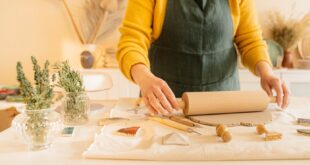A friend asked question last week about the best method of painting an old dining room chair with a wicker seat. Without hesitation I suggested using a tin of spray paint, my friend was surprised! She genuinely believed that tins of spray paint were used solely for cars and metal objects. Well of course she was wrong, spray painting using a can or cans will give a very professional finish to almost any surface that can be painted.
The secret, just like any other DIY project, is to prepare the surface carefully. First strip off any old and unsound surface coating or sand back a good solid finish. Treat any problem areas like dents, dings, cracks and scratches by filling with a filler of your choice for the job involved . Sand away any loose paint or rust. Then give a final all over sand to smooth the surface and if the object is dirty a good wash using diluted sugar soap will get it ready to spray.
Whilst spray painting will give you a great result with the finished surface its downside is overspray. This means that because spray paint is so fine and under high pressure paint will drift onto surfaces that you would prefer not to paint. In professional workshops spray booths are used to keep the paint in one area. Unless you are very wealthy it is not usual to have a purpose built spray booth at home. What you can do is make your own. One way to do this is to get a large cardboard box ( maybe one that you get from your local appliance store off a fridge or similar) another way is to hang old drapes, towels, sheets or whatever in the workshop to close in an area and restrict paint drift. Unless you want to colour the entire object mask off the areas you do not want to paint. This is very easy using masking tape and old newspapers.
Back to that wooden chair, after preparing the surface you are now prepared to spray it Daisy Yellow, before you do consider the different colours on the chair at the moment. Possibly some of the old purple paint sanded back, a couple of area are white where you have filled holes and maybe there is some bare wood showing as well. Consider a primer coat. Primer paint will help you in getting a really good finish, primers contain more solids than top coats, this makes them ideal for forming a uniform colour for you to spray your on your finishing coat. Now shake the can !
Shaking an aerosol can of paint is a very important part of the preparation for spray painting. Inside the tin are small marble like mixing balls that, as you shake the can, will move around and mix the paint so that it has an even constituency. Usually this will take a minute however please read the instruction on the can you are using as the time required can vary between manufacturers.
Another useful tip is to make sure that if the surface that you are about to paint already has a surface coating that this coating and your spray paint are compatible.
Hold the spray can upright and about 300mm away from the surface to be painted and spray in a back and forward motion overlapping each stroke. Repeat the procedure from left to right until an even coverage has been achieved. Always keep the can moving while spraying. It is very important to only apply light coats of paint at a time. A far better finish will be achieved if you spray several light coats rather than one heavy one.
Between coats or when you have finished spraying turn the can upside down and press the spray button for a short burst to clear the paint out of the nozzle.
With careful use and by following the manufacturers’ instructions a fantastic finish can be achieved when using spray paint.








Join the Discussion
Type out your comment here:
You must be logged in to post a comment.